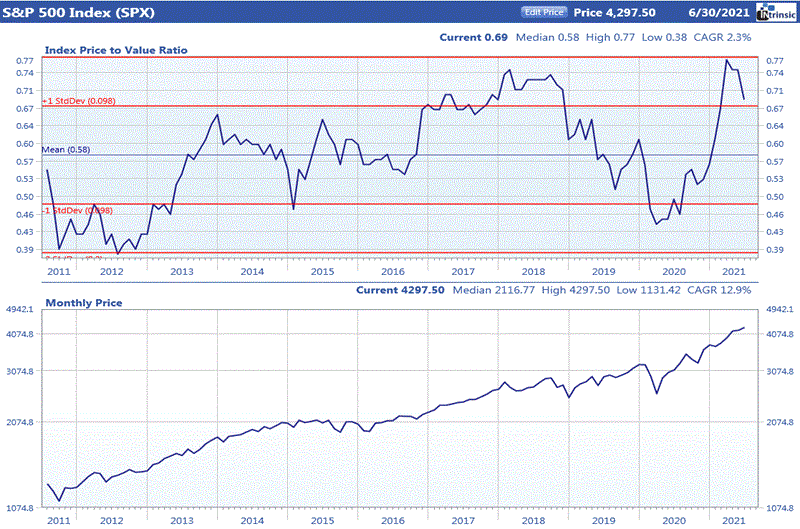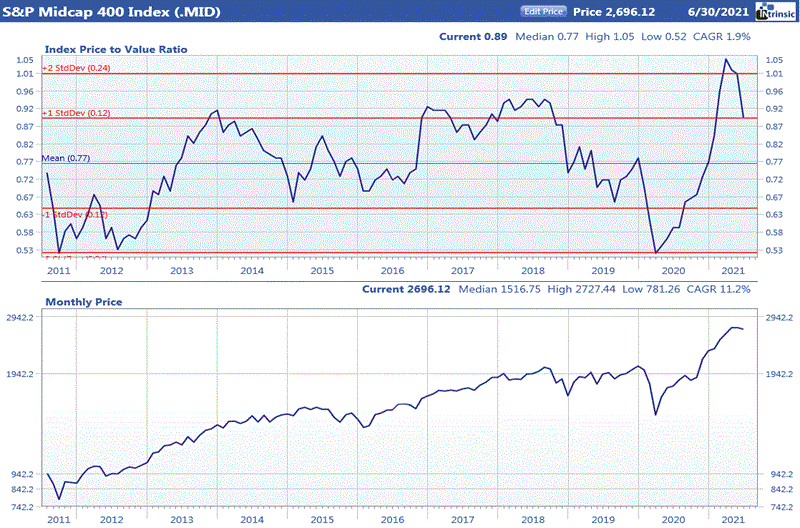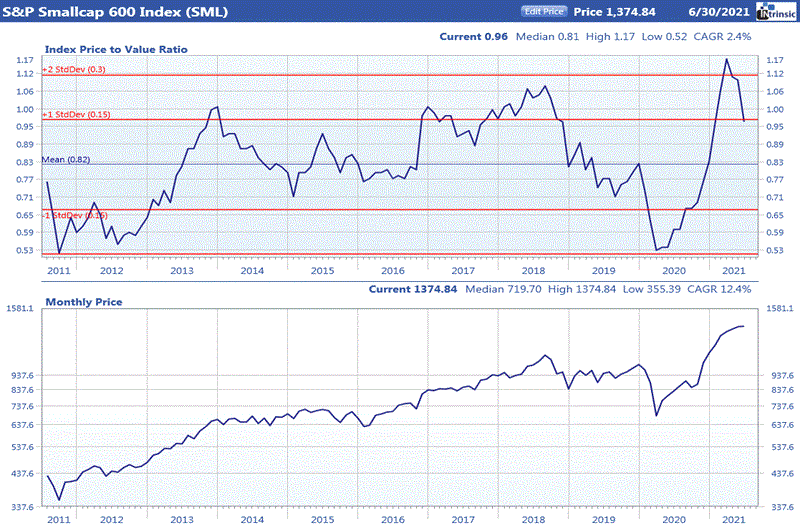Market Briefing
July 2021
Stock market averages posted mixed results in June as economic headlines had investors vacillating between favoring cyclical or growth issues and ultimately choosing the latter to close the month. Large and small cap indexes outperformed mid-caps in June. The economic news was mostly positive with manufacturing and payrolls reports coming in above estimates. CPI for May also came in above the estimates. The Fed left rates unchanged. However, the meeting notes were interpreted to view that the Fed might consider increasing interest rates earlier that had previously been expected. Investors favored growth stocks during the month. Projected growth rate, recent period sales growth, price momentum and earnings trend were among the best performing stock selection factors for June. Value selection factors lagged, with p/e ratio, operating earnings yield, and price/cash flow landing near the bottom of the performance list. Slightly more than half of the industry groups we cover had positive average price changes for the month. Rising energy prices helped boost performance of the oil sector. Oil producers, integrated domestic and international oil, and oil well drilling industry groups were all among the top performers for June. Technology stocks, especially those in the computers and semiconductors industry groups, were also near the top of the list. Among the weakest performing groups for the month were those in the transportation sector including airlines, trucking and railroads. Additionally, materials groups performed poorly with copper, forest products, steel and miscellaneous metals and mining all posting negative average price changes.
Value of the Market



Ford’s price to value ratio (PVA) is computed by dividing the price of a company’s stock by the value derived from a proprietary intrinsic value model. A PVA greater than 1.00 indicates that a company is overpriced while a PVA less than 1.00 implies that a stock is trading below the level justified by its earnings, quality rating, dividends, projected growth rate, and prevailing interest rates. While looking at the PVA for an individual company can give a good indication of its value, the average PVA for the market as a whole can provide insight into current valuation levels.
Source: Ford Equity Research
